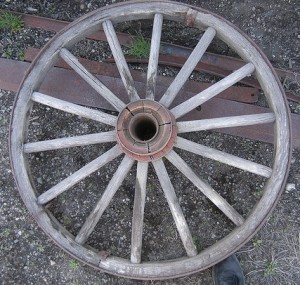
Community engagement. What is it? How do you do it? What will you get if you try? These are questions (or variations of questions) I get when I bring this topic to the table in most corners of the arts establishment. Some (but by no means all) elements of the big box arts infrastructure are under the impression that community engagement (developing substantive relationships with “unusual suspects” outside of any specific effort to sell tickets) is a new idea (!?) and that there are few if any precedents for such efforts.
Even discounting the fact that (so far as we can tell) the arts originally grew out of communal expression, the “this is a brand new idea” school of thought is simply wrong. Grassroots arts experiences and the organizations that produce them have been at this work for generations.
I have commented before that Appalshop’s Roadside Theater, based in Whitesburg, KY served as an early revelation to me about the possibility of connecting art and community in the U.S. They have for decades been developing and refining community engagement skills. One in particular is worthy of special note. Roadside makes extensive use of story circles both in the development of new work and in obtaining feedback on performances. In an interview included in Clayton Lord’s Counting New Beans, Mr. Cocke describes their use of story circles and the centrality of that use to their artistic mission. (A pdf of the interview is available here.)
After showing a work in progress, we like to hear more stories from the audience about the story the play is trying to tell. We have a particular storytelling methodology—it’s a formal story circle method—that we use. It provides a form, and forum, for audience members to tell their personal stories about the themes in the performance in which they have just participated as audience members. Parts of some of their stories eventually may be incorporated into the play. This process is repeated as the play develops, with the goal of deepening and bringing more nuances to the story we are telling. In that way, the play develops from these deepening iterative stories that the audience is telling around the themes.
Since the lives and culture of the people who are their audience are principal subject matter for Roadside’s work, this is an artistically appropriate method of development. Upon “completion” of the work, Roadside continues to use story circles as part of the process of engaging with audiences.
Say we put on a play about that moment here in the coalfields when people made the change from a small subsistence farm economy to an industrial economy. That’s a theme that you can find in places around the world. After the play, rather than having a talk-back with the audience, in which someone says, “Well, why did the actor or director make this choice?” or “I like this better than that” or “I didn’t understand this”—rather than that, we go into story circles with the audience to hear their personal stories called up by the performance. As a bonus, these new stories help the actors develop their roles.
The story circle, both in script development and in post-performance dialogue is an integral part of Roadside’s artistic process, not an engagement add-on. It is (and comes across as) authentic because, as they say, it is. It is also not a simple focus group. The responses sought are not in the “like/don’t like and why” category. The leaders are trying to draw out parallels in the participants’ life experiences to the reality presented on stage. The purposes are (in the development phase) to improve (deepen) the artistic product and (in the production phase) to draw the audience members to a greater involvement with the play and with the company.
Story circles are only one method of engagement used by a company with deep experience in connecting with community members. Other tools are available and have the advantage of years of development in practice. There is much experience and wisdom in engagement available for the copying. We don’t need to invent completely new approaches as we awaken to the wisdom of engagement. We simply need to know where to look to find the wheels that have already been invented.
Engage!
Doug
Photo:![]() Some rights reserved by maugan22
Some rights reserved by maugan22
